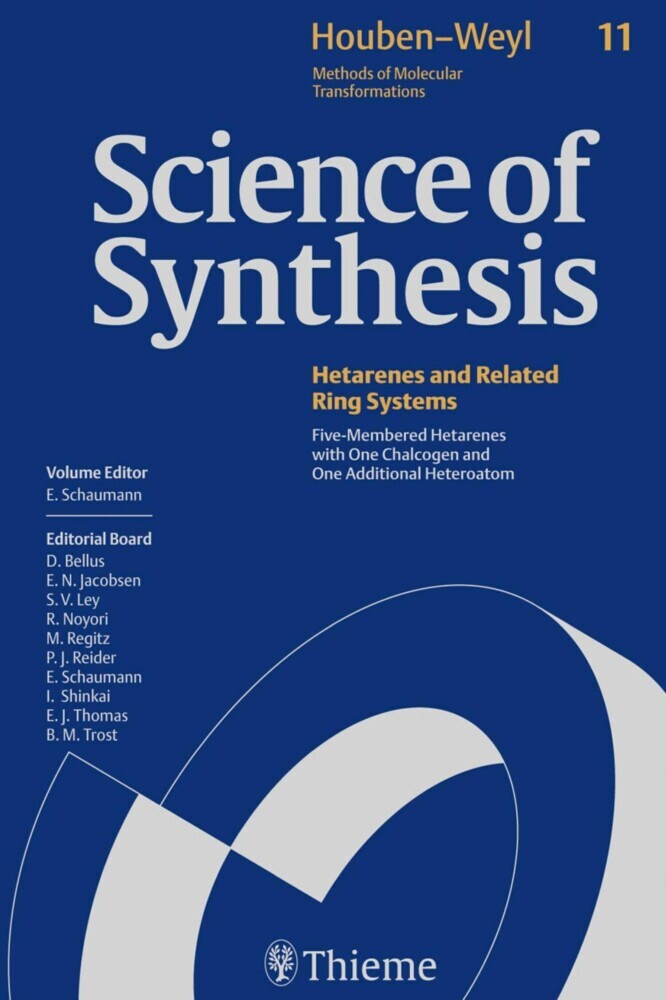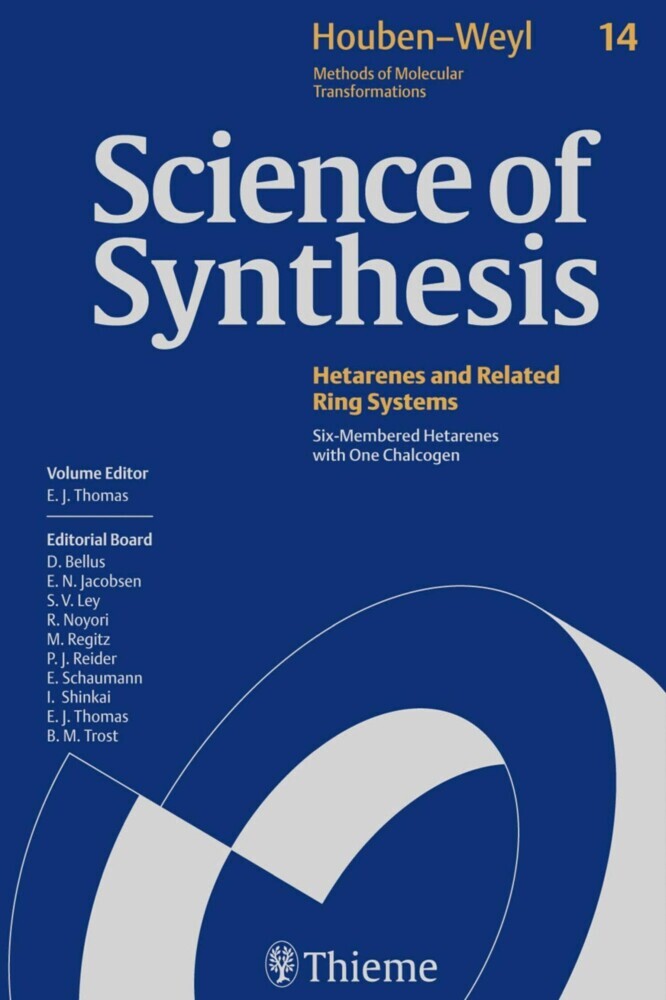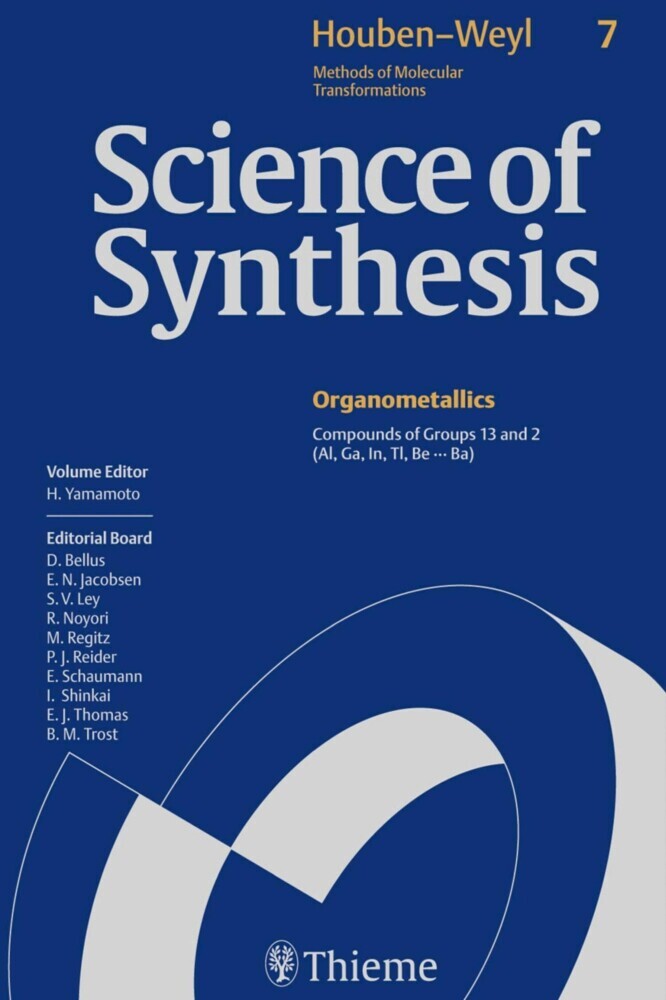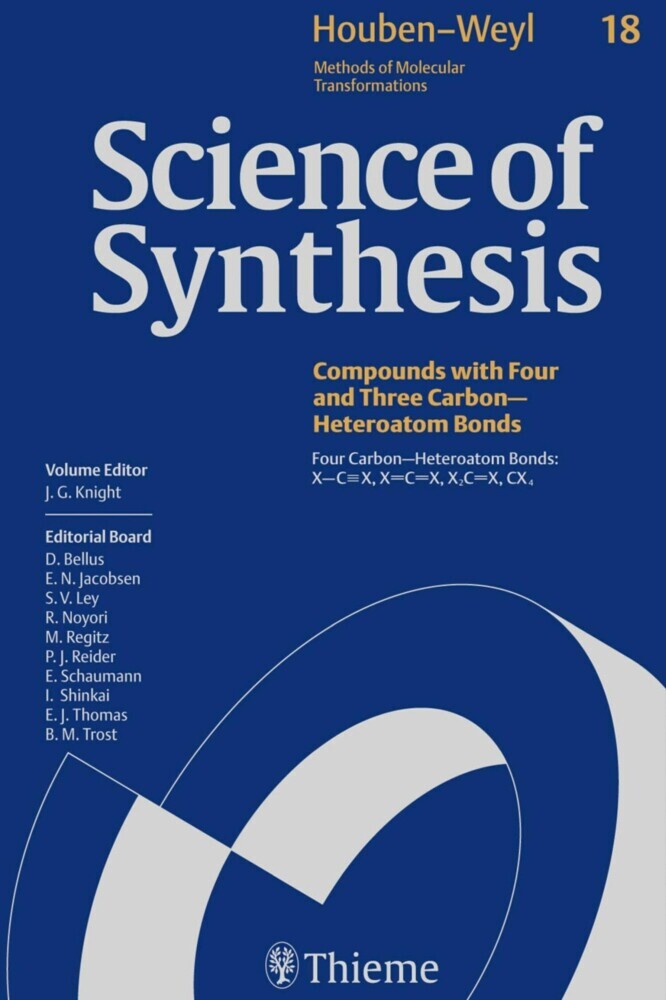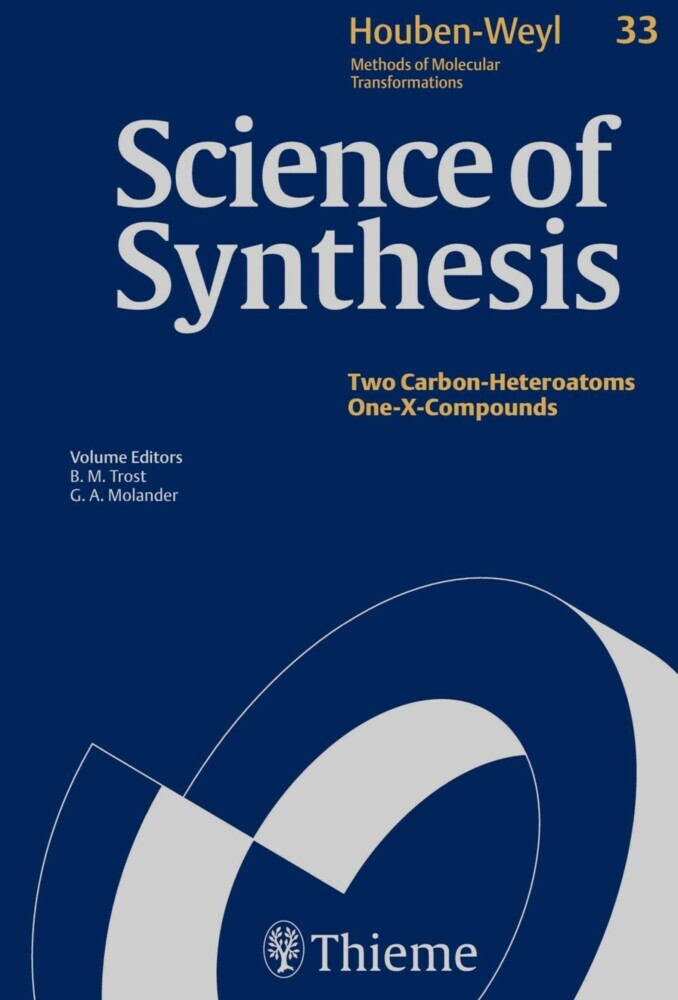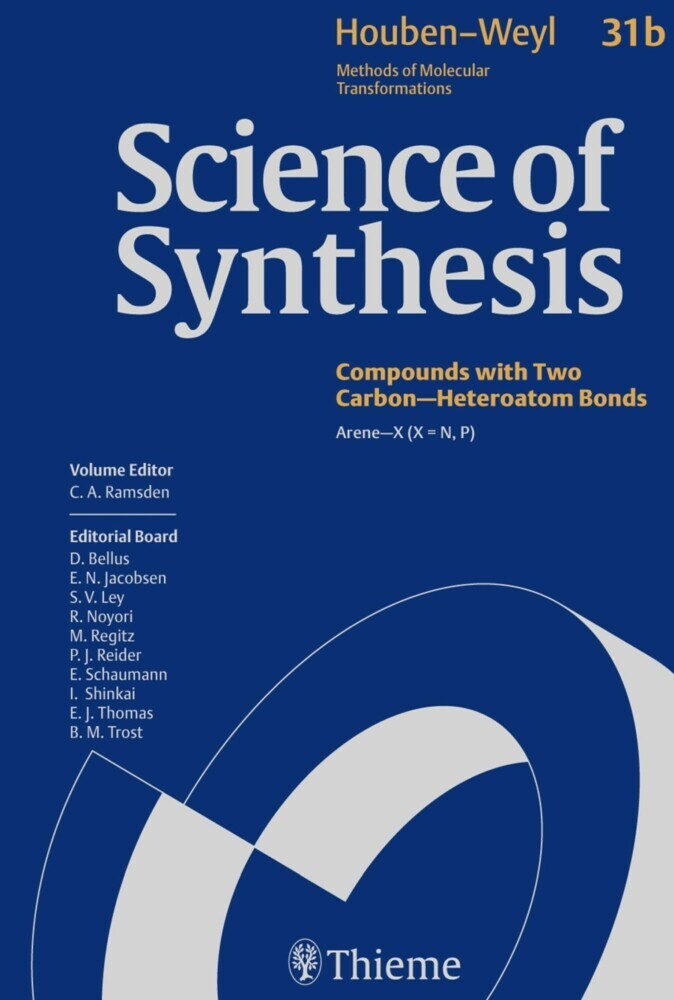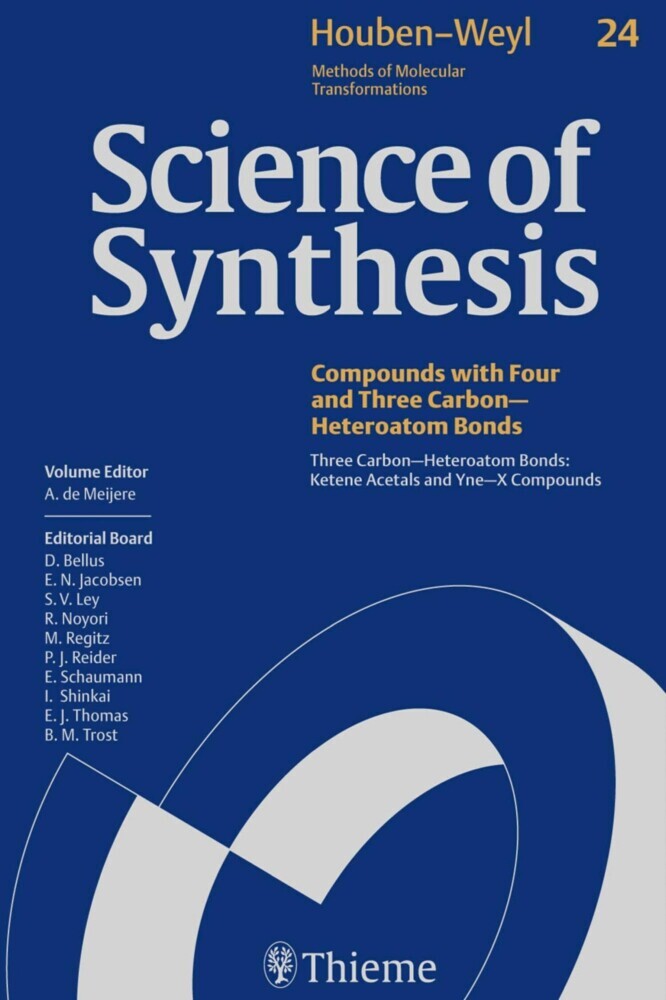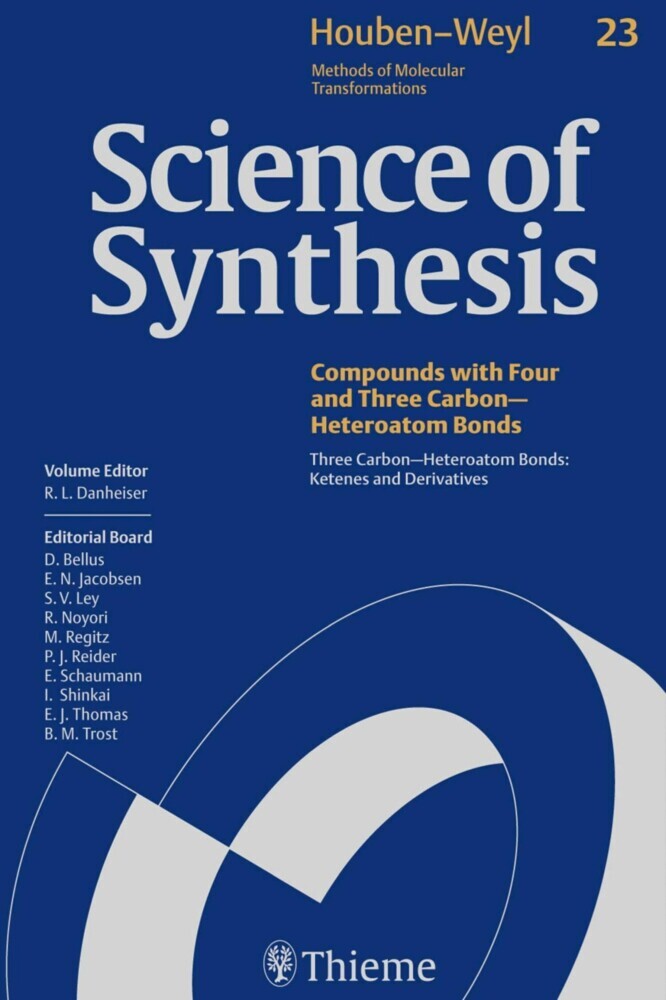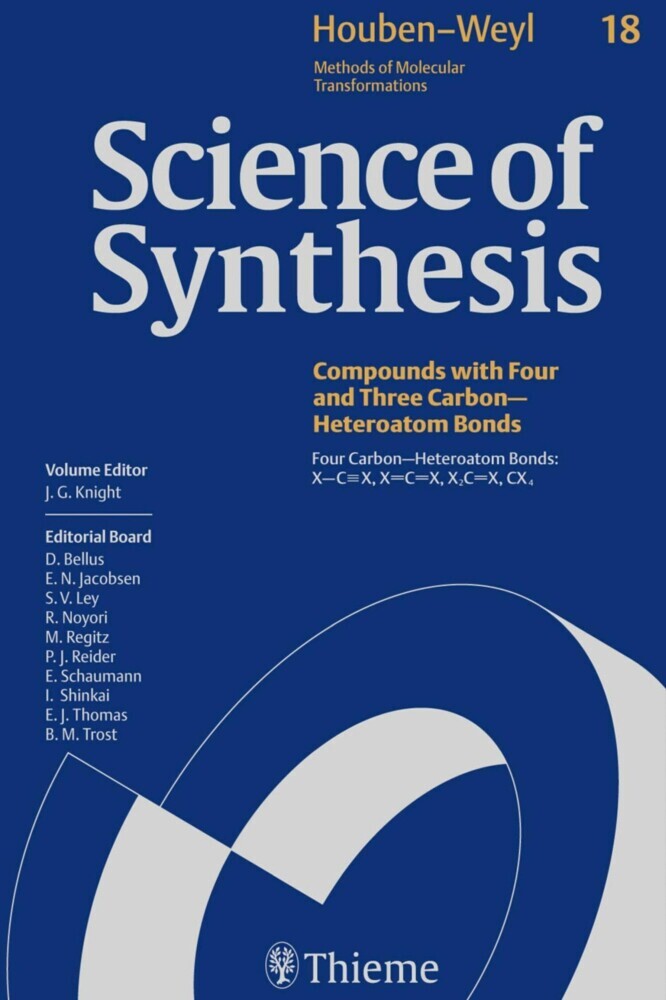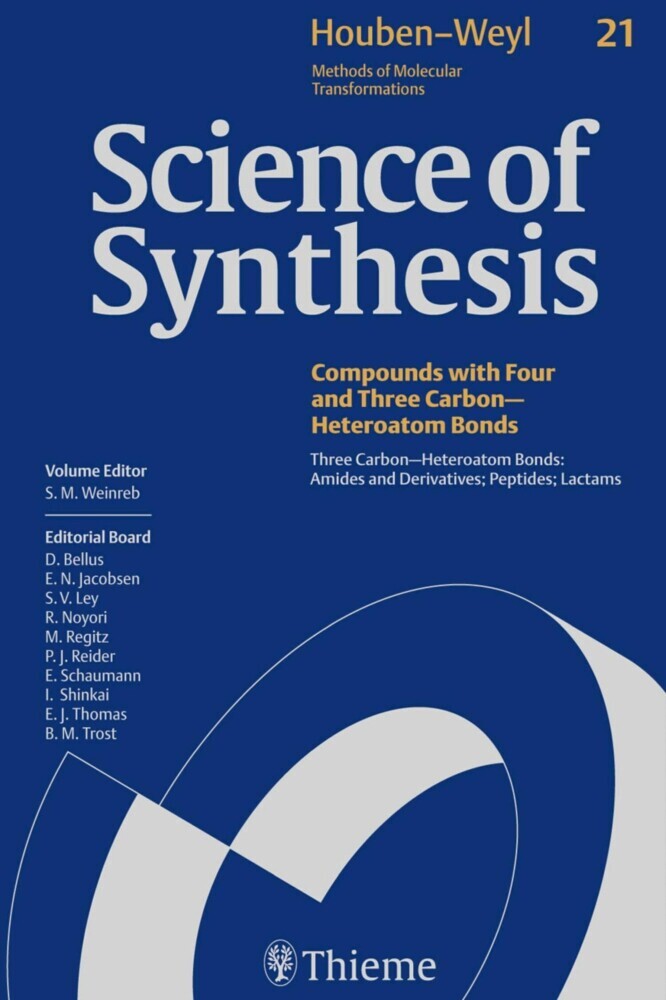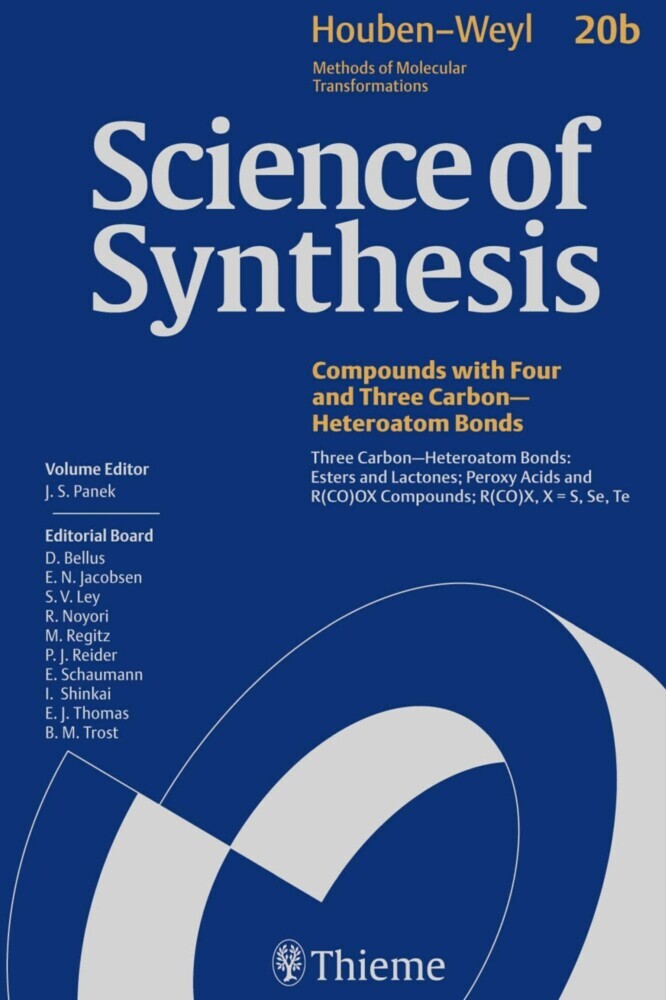Science of Synthesis: Houben-Weyl Methods of Molecular Transformations Vol. 11
Science of Synthesis: Houben-Weyl Methods of Molecular Transformations Vol. 11
Turning Information into Knowledge
Science of Synthesis: Houben-Weyl Methods of Molecular Transformations is the entirely new edition of the acclaimed reference series, Houben-Weyl, the standard synthetic chemistry resource since 1909. This new edition is published in English and will comprise of 48 volumes published between the years 2000 and 2008.
Science of Synthesis is a quality reference work developed by a highly esteemed editorial board to provide a comprehensive and critical selection of reliable organic and organometallic synthetic methods. Science of Synthesis is designed to be the first point of reference when searching for a synthesis strategy.
This volume is the third in Category 2 (Hetarenes and Related Ring Systems) of Science of Synthesis and deals with five-membered hetarenes with one chalcogen and one additional heteroatom. Throughout this category, a hetarene is considered to be a heterocyclic ring with a fully conjugated perimeter of pi- or nonbonding electrons. Additionally, potentially tautomeric systems with a hydroxy, sulfanyl, or amino substituent are included when conjugation is possible at least in one tautomer. In the Volume 11, this formal definition leads to quite different types of five-membered heterocyclic ring systems including the 1,2- or 1,3-arrangement of two chalcogen atoms to give cationic rings, as well as 1,2- or 1,3-combinations of a chalcogen atom and a nitrogen or phosphorus atom. The latter group comprises well-known ring systems such as oxazoles or thiazoles, but also less well-studied ring systems.
For full information on the Science of Synthesis series, visit the Science of Synthesis Homepage. Series Editors: D. Bellus, S. V. Ley, R. Noyori, M. Regitz, E. Schaumann, I. Shinkai, E. J. Thomas, B. M. Trost, P. J. Reider
Ernst Schaumann
1;Science of Synthesis - Volume 11: Five-Membered Hetarenes with One Chalcogen and One Additional Heteroatom;1 1.1;Title page;3 1.2;Imprint;5 1.3;Preface;6 1.4;Volume Editor's Preface;8 1.5;Overview;10 1.6;Table of Contents;12 1.7;Introduction;54 1.8;11.1 Product Class 1: 1,3-Dioxolium Salts and Annulated Analogues;66 1.8.1;11.1.1 Product Subclass 1: Monocyclic 1,3-Dioxolium Salts;68 1.8.1.1;11.1.1.1 Synthesis by Ring-Closure Reactions;68 1.8.1.1.1;11.1.1.1.1 By Formation of Two O--C Bonds;68 1.8.1.1.1.1;11.1.1.1.1.1 Method 1: Reaction of a-Diazo Ketones with N-Carbonylmethaniminium Salts;68 1.8.1.1.1.2;11.1.1.1.1.2 Method 2: Reaction of a-Diazo Ketones with Acyl Trifluoromethanesulfonates;69 1.8.1.2;11.1.1.2 Synthesis by Substituent Modification;71 1.8.1.2.1;11.1.1.2.1 Addition Reactions;71 1.8.1.2.1.1;11.1.1.2.1.1 Method 1: Addition of Electrophiles to 1,3-Dioxol-2-one;71 1.8.1.2.1.2;11.1.1.2.1.2 Method 2: Addition of Electrophiles to 1,3-Dioxole-2-thione;71 1.8.1.2.2;11.1.1.2.2 Substitution of Existing Substituents;72 1.8.1.2.2.1;11.1.1.2.2.1 Method 1: Elimination of a Methoxy Group from a 2-Methoxy-1,3-dioxole;72 1.8.2;11.1.2 Product Subclass 2: Monocyclic Mesoionic 1,3-Dioxolium-4-olates;73 1.8.2.1;11.1.2.1 Synthesis by Ring-Closure Reactions;73 1.8.2.1.1;11.1.2.1.1 By Formation of One O--C Bond;73 1.8.2.1.1.1;11.1.2.1.1.1 Method 1: Catalytic Decomposition of Aryldiazoacetic Benzoic Anhydrides;73 1.8.2.1.1.2;11.1.2.1.1.2 Method 2: Thermal Dehydration of O-Acetylmandelic Acid;75 1.8.3;11.1.3 Product Subclass 3: Annulated 1,3-Dioxolium Salts;76 1.8.3.1;11.1.3.1 Synthesis by Ring-Closure Reactions;77 1.8.3.1.1;11.1.3.1.1 By Annulation to an Arene;77 1.8.3.1.1.1;11.1.3.1.1.1 By Formation of Two O--C Bonds;77 1.8.3.1.1.1.1;11.1.3.1.1.1.1 Method 1: From Catechol and Carbenium Salts;77 1.8.3.2;11.1.3.2 Synthesis by Substituent Modification;78 1.8.3.2.1;11.1.3.2.1 Addition Reactions;78 1.8.3.2.1.1;11.1.3.2.1.1 Method 1: Addition of Electrophiles to 1,3-Benzodioxol-2-one;78 1.8.3.2.2;11.1.3.2.2 Substitution of Existing Substituents;78 1.8.3.2.2.1;11.1.3.2.2.1 Method 1: Elimination of Chloride from 2-Chloro-1,3-benzodioxoles;78 1.8.3.2.2.1.1;11.1.3.2.2.1.1 Variation 1: Ionization of 2,2-Dichloro-1,3-benzodioxole;78 1.8.3.2.2.1.2;11.1.3.2.2.1.2 Variation 2: Ionization of 2,2-Dichloro-1,3-benzodioxole in the Presence of Nucleophiles;79 1.8.3.2.2.2;11.1.3.2.2.2 Method 2: Elimination of a Methoxy Group from 2-Methoxy-1,3-benzodioxoles and Related Systems;80 1.9;11.2 Product Class 2: 1,2-Oxathiolium Salts;84 1.9.1;11.2.1 Synthesis by Ring-Closure Reactions;84 1.9.1.1;11.2.1.1 By Formation of One O--S Bond;84 1.9.1.1.1;11.2.1.1.1 Method 1: Oxidation of a Monothio ß-Diketone;84 1.9.2;11.2.2 Synthesis by Substituent Modification;84 1.9.2.1;11.2.2.1 Addition Reactions;84 1.9.2.1.1;11.2.2.1.1 Method 1: Protonation of 1,6-Dioxa-6a-thiapentalenes;84 1.10;11.3 Product Class 3: 1,3-Oxathiolium Salts and Related Compounds;88 1.10.1;11.3.1 Product Subclass 1: Monocyclic 1,3-Oxathiolium Salts;92 1.10.1.1;11.3.1.1 Synthesis by Ring-Closure Reactions;94 1.10.1.1.1;11.3.1.1.1 By Formation of One O--C and One S--C Bond;94 1.10.1.1.1.1;11.3.1.1.1.1 Method 1: From Ketones and N-Substituted S-Chloroisothiocarbamoyl Chlorides;94 1.10.1.1.1.2;11.3.1.1.1.2 Method 2: From a-Halo Ketones and Thiocarboxamide Derivatives;96 1.10.1.1.1.2.1;11.3.1.1.1.2.1 Variation 1: From a-Bromo Ketones and Tetramethylthiourea (or S-Alkyl Dithiocarbamates);96 1.10.1.1.1.2.2;11.3.1.1.1.2.2 Variation 2: From a-Bromo Ketones and Arenethiocarboxamides;98 1.10.1.1.1.2.3;11.3.1.1.1.2.3 Variation 3: From a-Bromo Ketones and Alkanethiocarboxamides in the Presence of Aryl (or Cinnamyl) Aldehydes;100 1.10.1.1.1.3;11.3.1.1.1.3 Method 3: From a-Bromo Ketones and S-Alkyl Dithiocarboxylates;101 1.10.1.1.2;11.3.1.1.2 By Formation of One O--C Bond;102 1.10.1.1.2.1;11.3.1.1.2.1 Method 1: Acid-Catalyzed Cyclization of 2-Oxo-2-phenylethyl Thiocyanat
| ISBN | 9783131718310 |
|---|---|
| Artikelnummer | 9783131718310 |
| Medientyp | E-Book - PDF |
| Copyrightjahr | 2014 |
| Verlag | Georg Thieme Verlag KG |
| Umfang | 1160 Seiten |
| Sprache | Englisch |
| Kopierschutz | Digitales Wasserzeichen |

